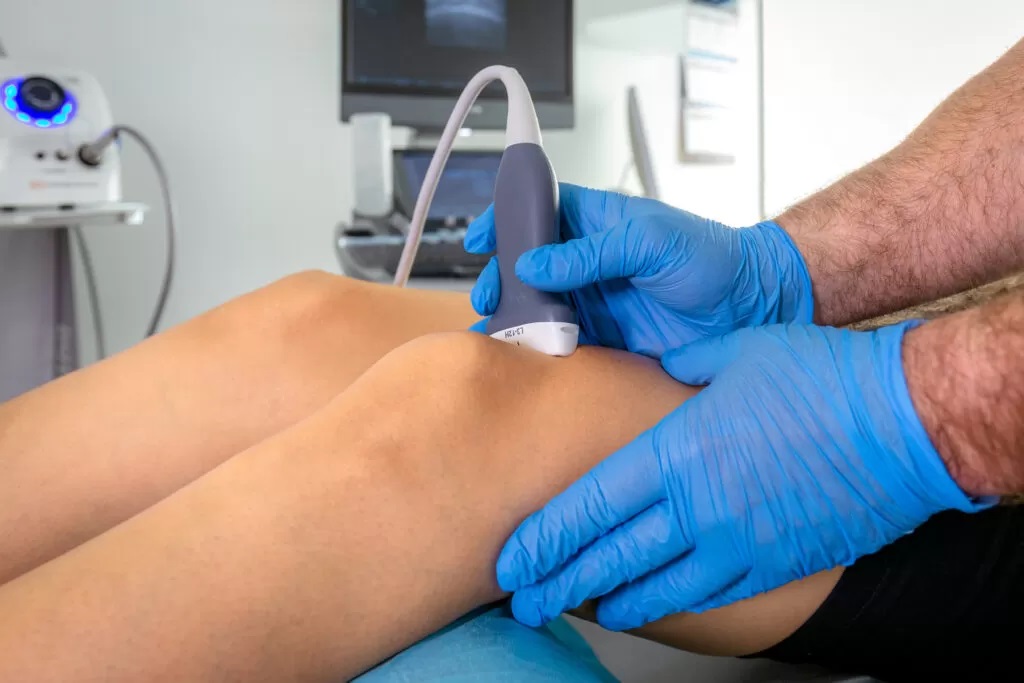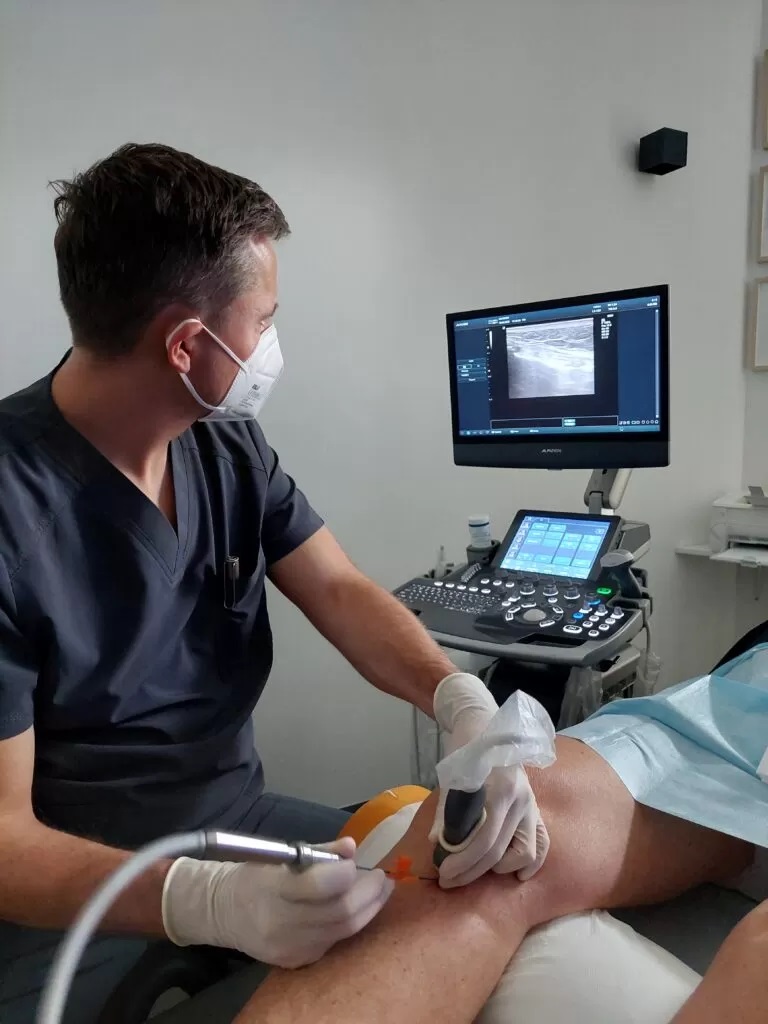Cryoanalgesia of the joint
Cryoanalgesia for the treatment of pain in osteoarthritis of the joint (hip, knee, ankle, shoulder joint).
What is cryotherapy and when is it used?
Cryoanalgesia is a treatment that is particularly useful for treating chronic pain sufferers. This includes patients who are forced to drastically reduce their basic physical activity and daily functioning due to symptoms. You can read more about the cryoanalgesia procedure below.
What is osteoarthritis and what causes it?
Osteoarthritis (arthrosis) can develop in any joint in which vitreous cartilage is present. Symptoms usually appear after the age of 40-50. The greatest changes affect the hip and knee joints because of the greatest mechanical stresses that occur in them. The cause of arthrosis is the slow deterioration of articular cartilage, whose function is to cushion joint movements and allow optimal sliding of joint surfaces. Over time, the bone layer beneath the articular cartilage, the joint capsule, ligaments, tendons and muscles surrounding the joint also degenerate. The symptoms that are most bothersome to patients are pain and reduced mobility of the joint.
The development of osteoarthritis is predisposed mainly by 2 factors: excessive stress on the joint (e.g., as a result of specific physical work or a level of sports that is unsuitable for the patient’s abilities) or disorders of body mechanics resulting from insufficient physical activity. In this case, the sedentary lifestyle, which affects the majority of the population, seems to be the biggest threat.
The symptoms of osteoarthritis are most often:
Pain often experienced at the onset of movement and/or during joint movement. Pain often subsides at rest; pain may worsen at the end of the day due to “fatigue” of the subchondral layer of cartilage. The pain may be felt in a specific location or may be more diffuse and wrenching – “my whole knee hurts”.
Stiffness – there is often what is known as morning stiffness (after waking up), which subsides after pacing. Stiffness of the joint may recur throughout the day after a period of immobility, such as prolonged sitting.
Restriction of full mobility of the joint. Problems with straightening or bending the joint appear – the joint works normally only in the “middle” range of motion.
Crackling and skipping – can indicate both a disruption in the sliding of the joint surfaces over each other and serious damage to the articular cartilage.
Distortion of the contour, shape of the joint
Swelling of the joint, which can indicate overloading of the joint and chronic inflammation of the joint itself and the tissues lying around it.

How to diagnose and treat osteoarthritis of the joint?

The diagnosis of osteoarthritis is made on the basis of history, clinical examination and imaging studies showing the extent of damage to the joint cartilage. The tests used here are: X-ray, MRI and ultrasound (US). Based on the current symptoms and imaging studies, the doctor suggests the appropriate treatment.
In the process of treating a patient with osteoarthritis, various measures are selected (separately or in combination) depending on the stage of the disease. These may include:
Early stage:
- Physiotherapy and proper physical exercises that develop both mobility (motility) of the joints and fitness of the relevant muscle groups
- pro-health education
- anti-inflammatory drugs
- sonosurgery: regenerative injections
- optimization of body weight
Intermediate stage:
- physiotherapy
- improving ergonomics of work and exercise
- sonosurgery: analgesic and anti-inflammatory injections
Advanced stage:
- sonosurgery: cryoanalgesia
- physiotherapy (after the pain is lifted away)
Cryoanalgesia in the treatment of osteoarthritis
Cryoanalgesia is a method of pain treatment that involves blocking the conduction of nerve impulses by locally freezing a nerve. This results in the abolition of the pain sensation of a particular joint. The effect of anesthesia lasts for several to several months after the procedure. Cryoanalgesia is a reversible procedure – it does not destroy the structure of the nerve and does not cause side effects – this allows cryoanalgesia to be applied repeatedly to the same person without causing any adverse effects.
The cryoanalgesia treatment is an excellent alternative for chronic pain medication users. It also creates new opportunities for patients awaiting back surgery – it not only eliminates pain, allowing for spontaneous increased activity, but also allows for the implementation of intensive rehabilitation. Thanks to the elimination of pain and targeted physiotherapy treatments, some of our patients manage to avoid surgery.
The treatment involves the insertion of a thin probe into the area of the corresponding nerve. The freezing reaction is caused by the rapid expansion of carbon dioxide inside the probe – the gas is inside the probe so there is no risk of an adverse reaction being the effect of the gas directly on the patient’s body. The tip of the probe lowers its temperature to about -70 degrees C.
The lack of side effects and systemic effects allows cryoanalgesia to be used repeatedly in the same person without causing any adverse effects.
Cryoanalgesia is used in the treatment and elimination of pain in the following cases:
- degenerative disease of the hip (includes indications for endoprosthesis)
- degenerative disease of the knee (includes indications for endoprosthesis)
- osteoarthritis of the shoulder (includes indications for an endoprosthesis)
- osteoarthritis of the ankle (includes indications for endoprosthesis)
- enthesopathies: tennis elbow, heel spur, Achilles tendon attachment.
Author: Jacek Grabowski

